四 教学过程设计
(一)情境导入
1.学生通过闪词活动翻译课件中的词汇。
(1)dust (2)keep off (3)clean the floor
(4)talk less (5)a pair of glasses (6)behind
(7)in front of (8)at the same time (9)see things clearly
(10)edible (11)望远镜 (12)筷子 (13)哑铃
2.以小组为单位练习以上单词的读法。学生练习后挑选一名同学带读。
设计意图
测试学生的预习效果,并通过小组练习的方式解决疑难点,为后面的听说教学做好铺垫。
(二)学与教的活动
——听力训练
1.教师展示一样有趣的发明并播放视频。学生通过观察猜想这样发明的名字和功能。
2.教师展示课本54页练习中的四项发明,学生观察并猜测名字。教师播放听力音频,学生完成练习验证猜想。

讨论这四项发明的功能是什么,并猜想四个题目的答案。讨论完毕后教师播放录音,学生印证猜想。_____________________________________________________________
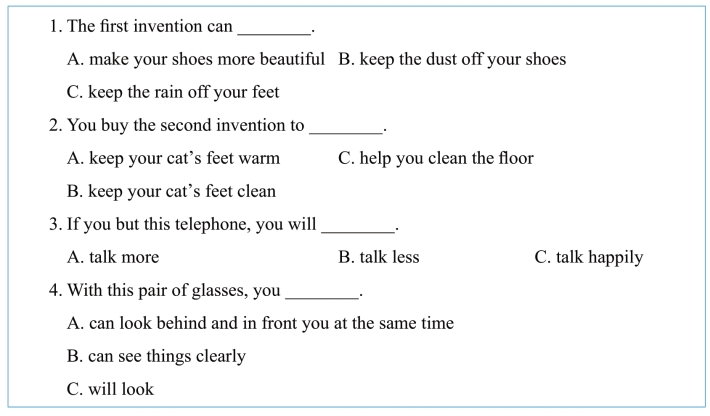
设计意图
1.先用一个较为简答的发明让学生通过观察来猜想。降低难度是为了引起学生兴趣,也是为后面的听力技巧进行铺垫。
2.学生在听力之前先观察,阅读并猜想是为了锻炼学生听力技巧。
——口语训练
1.对子练习:学生根据所给例句通过结对形式练习对话,介绍听力部分的4项发明。挑选学生展示后,学生观察对话,并从中总结句型。
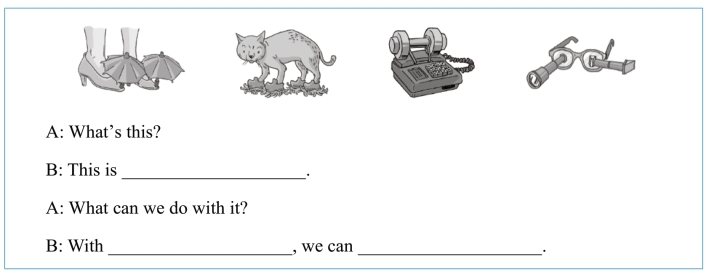
2.填空复述:学生看一段自制视频,根据视频内容完成下面的文章填空。以小组形式对答案后,组内朗读文章。小组推选一名同学作为示范,利用老师给的道具进行复述。展示过后学生总结出文段中有关功能描述的句型。
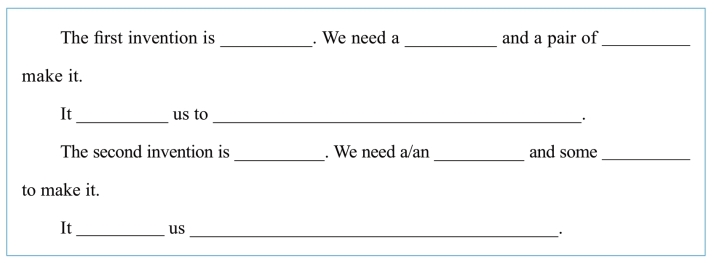
3.小组任务:教师给出有关4项发明的文章(见附件2),学生阅读过后画出文章中有关功能描述的句型。并以小组为单位票选最实用的发明,利用前面所学句子和文章中积累的句子依次说明原因。

4.个人报告:学生选择一项自己认为最有用的发明利用今天所学的所有句型完成小文章。

设计意图
通过对子练习、小组合作、个人报告的不同形式,让每个学生都能参与到课堂中。
学生通过练习观察和总结更能加深对知识点的印象。其次从句子到文段,反复练习句型,也能提高学生对句子的掌握程度。
有趣的发名能激发学生的兴趣,贴近生活的实用发明能让学生更有参与感。内容从有趣的发明过渡到实用发明体现单元教学设计的原则,使部分不与整体分离。
——课堂小结
1.讨论:学生观看两段视频。第一段是世界各地的人通过VR技术在网络平台上互相学习语言的视频。第二段是电影片段,片段中的主人公通过VR技术进入另一个虚拟世界中生活。学生通过影片讨论VR技术的优缺点和什么才是伟大的发明。
2.知识总结:学生总结今天所学的句型。

3.自我评价:学生完成自评表。

(四)课后作业
选择一项自己认为是伟大的现代发明,并写一篇文章谈谈原因,要求用上听说课所学句型。
设计意图
通过观看视频,学生讨论一项发明的优缺点并思考什么是伟大的发明,能够锻炼学生的辩证思维,与本单元的主题相扣,实现情感目标。
学生通过总结本堂课知识点梳理,巩固课堂知识。
学生通过自评表了解学习状态,实现自我反思和总结,进行调整。
附件1 8A Unit 4 Funny Inventions(课前预学案)
附件2 8A Unit 4 Funny Inventions(课堂导学检测案)
附件1:
8A Unit 4 Funny Inventions(课前预学案)
1.Read page 54 and then translate the following words and phrases.
(1)dust__________ (2)keep off__________
(3)clean the floor __________ (4)talk less__________
(5)a pair of glasses __________ (6)behind__________
(7)in front of __________ (8)at the same time__________
(9)see things clearly __________ (10)edible__________
(11)望远镜 __________ (12)筷子__________
(13)哑铃__________
2.Translate the following sentences.
(1)电话使得我们能够与他人随时随地保持联系。(sth.allow sb.to do.sth)
________________________________________________________________
(2)我们能够用电脑来操控铁路,控制飞机和太空飞船。(we can use...to do ...)
________________________________________________________________
(3)有了电灯,我们能够在夜晚做很多事情。(With ..., we can ...)
________________________________________________________________
(4)有了纸,我们能够制作书和印刷报纸。(With ..., we can ...)
________________________________________________________________
3.Write down as many functions as you can.


4. What is the most useful invention to you and your group members? Please discuss together and fill in the blank.
Group __________: We think __________ is the most useful invention to us.
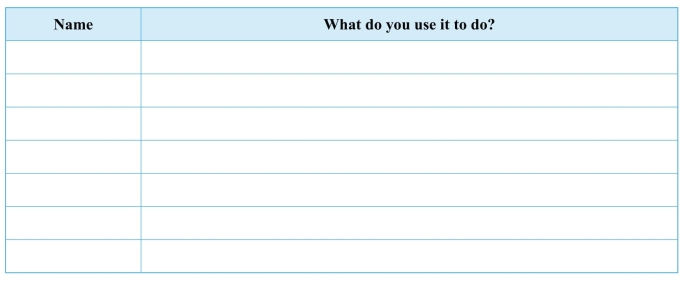
附件2:
8A Unit 4 Funny Inventions(课堂导学检测案)
Step 1: Warming up
Watch the video and answer the questions:
1.What is the name of this invention?_________________________________________
2.What can we do with it?__________________________________________________
Step 2: While listening
1.Listen to the tape, write down the name of these inventions.(page54)
2.Listen to the tape again and then circle the correct answer.(page54)
Step 3: Speaking
1.Pair work: Introduce these inventions in your words.
A: What’s this?
B: This is ______________.
A: What can we do with it?
B: With ______________, we can ____________________________.
2.Retelling:Watch a video about Chindogu and retell the inventions.
(1) The first invention is ______________.We need a ______________ and a pair of ______________ to make it.It ______________ us _________________________.
(2)The second invention is ______________.We need a/an ______________ and some ______________ to make it.It ______________ us to____________________
3. Read the passage and underline useful sentence patterns for you.Then in group choose the most useful invention .
(1)
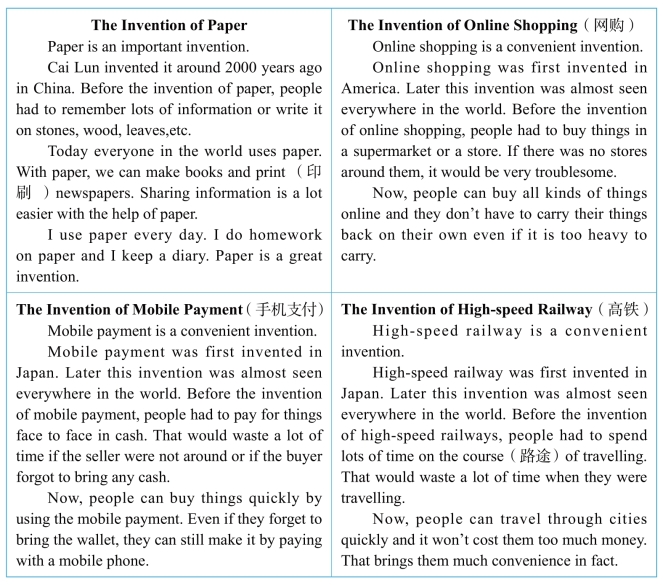
(2)Group work: Fill in the blanks.
We think ______________ is the most useful invention to us:
S1: I can use it to __________________________________________;
S2: With ______________, I can ___________________________________________;
S3: It ______________ us to __________________________________________.
S4: …
S5: …
(3)Self-report
____________is the most useful invention to me:
____________allow us to _____________________________________.
With ____________, we can ____________________________________.
What’s more, we can ____________________________________.
____________I can’t imagine living without________________________________.
Step 4: Critical thinking
Step 5: Self-assessment

